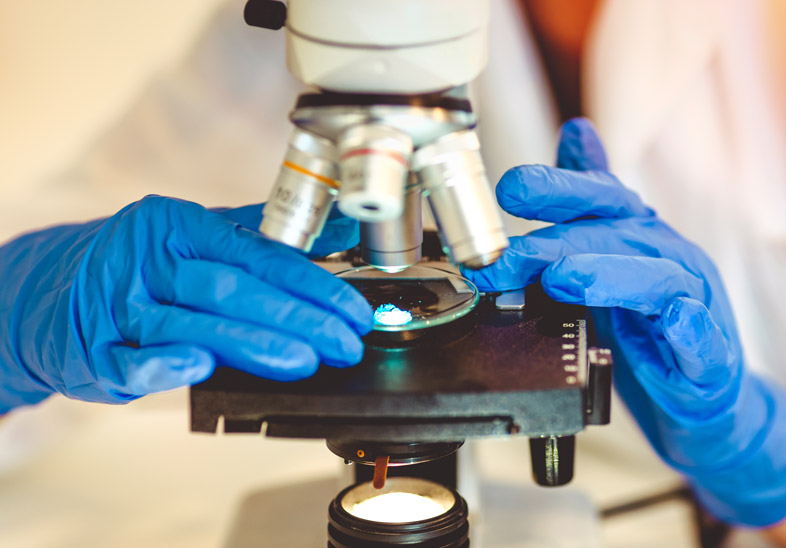
Testicular biopsy
What is a testicular biopsy?
A testicular biopsy is a surgical technique that involves obtaining a sample of testicular tissue through an incision in the scrotum. A preliminary examination of the male (physical examination and hormone analysis) helps to determine in which cases a testicular biopsy would be useful, although only microscopic examination of the tissue obtained after the biopsy will allow an accurate diagnosis to be made.
There are typically two principal reasons for a testicular biopsy. When done for diagnostic purposes, it entails the removal of testicular pulp for histopathological study, an assessment of testicular capability, and to ascertain sperm production by the testicular cells; or for a genetic study of meiosis, which examines whether sperm are created with a chromosome number other than the expected 23. Although biopsies are usually performed for diagnostic purposes, they can also be performed for therapeutic reasons: to extract immature sperm, if present, for use in assisted reproduction and to freeze reserve samples for subsequent reproduction cycles.
How is this test performed?
A testicular biopsy is an outpatient procedure in which the patient can walk in and out on their own, without requiring hospitalisation. Anaesthesia (local) is administered in the groin area.
During the biopsy, the andrologist obtains one or more fragments from one or both testicles to be studied in the laboratory in order to determine whether or not they contain sperm.
The study carried out in the laboratory begins by dislocating the fragments in order to release the sperm, if any, and prepare them for the ICSI (intracytoplasmic sperm injection) technique, selecting one sperm for each oocyte on the same day and/or cryopreserving and storing them.
Although it is possible to obtain embryos and pregnancies from ICSI using sperm obtained from testicular biopsy, fertilisation rates are lower than when using sperm from ejaculate, because biopsy-derived sperm are immature.
For which patients is the procedure indicated?
A testicular biopsy is indicated in four situations:
- In cryptorchidism (incomplete descent of one or both testicles through the inguinal canal into the scrotum).
- In azoospermia, those situations in which no sperm are found in the ejaculate. In these cases, the prognosis will depend on whether sperm are actually not being produced (secretory azoospermia) or whether they are being produced but do not appear in the ejaculate (secretory or obstructive azoospermia).
- In aspermia (complete lack of semen with ejaculation), when it is not possible to obtain a sample of ejaculated semen using other techniques such as prostate massage, prostate electrostimulation or urine lavage in cases of retrograde ejaculation.
- For men with an irreversible past vasectomy or in cases where epididymal microaspiration fails to yield sperm.
How long does the procedure take? Is it painful?
Like any outpatient procedure performed under local anaesthetic, it is usually a short procedure (around 30 minutes) with a quick recovery time. Local pain, which subsides with painkillers, inflammation and/or bruising are the main complications that may occur, although they are not common. A review one week after the procedure is recommended.
What alternatives exist for this technique?
The alternative, when no spermatozoa are detected in the biopsied testicular sample, is to use semen from an anonymous donor.


































